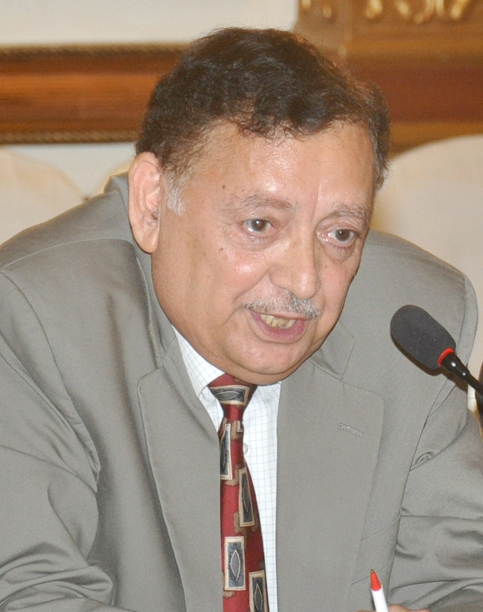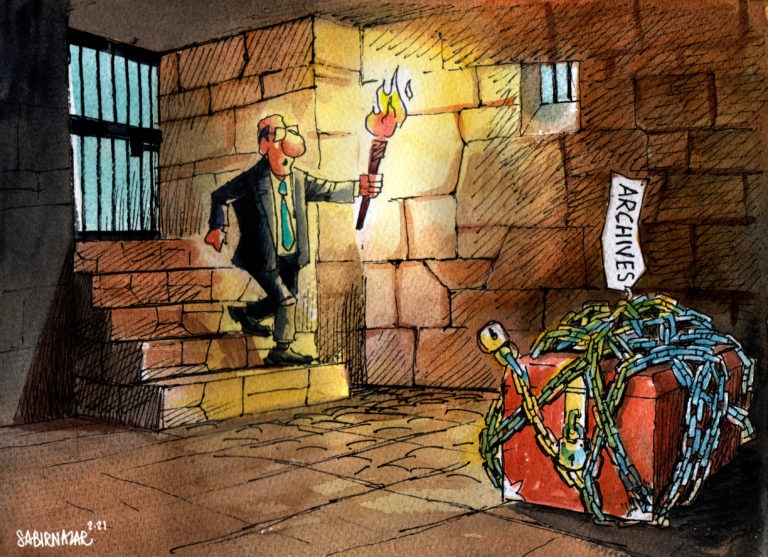The current federalist arrangements for sharing the political landscape of Pakistan amongst its constituent parts represent the wish list of the political leadership, especially from the smaller provinces, more than the reality on the ground. The history of federalism in this country is a story of ‘two steps forward, one step backwards’. At the heart of the problem lies the conflict between the state elite – known in common parlance as ‘establishment’ – and the political elite that fights elections from the platform of political parties, operates through the floors of elected assemblies at the federal and provincial levels and makes and implements laws. As a result, for half a century the political system remained federal in form but unitary in substance. The 2010 18th Amendment was an attempt to meet the persistent demand for provincial autonomy and expand the scope of ‘institutional pluralism’ as represented by federalism.
The state elite typically identified with the army and the bureaucracy has an overarching security orientation. In the 1950s, it pushed for putting together One-Unit comprising the four provinces and Princely States of West Pakistan, thus eliminating federalism from that region. The two constitutions of 1956 and 1962 were based on One-Unit and inter-wing parity even as the East wing had the majority of the country’s population. Non- accommodation of Bengali nationalist aspirations for provincial autonomy, for a quarter of a century, led to secession of East Pakistan.
At the other end, the political elite has all along struggled for electoral democracy, parliamentary rule and, in the case of Sindh, Balochistan and Khyber Pakhtunkhwa, provincial autonomy. Perceptions about ‘Punjabization’ of the state pushed these provinces to demand for transferring the legislative subjects included in the concurrent list of the 1973 Constitution to the provinces. The 1973 Constitution had sought to offset the fears of demographic preponderance of Punjab by creating the Senate as the territorial chamber, where all provinces enjoyed equal representation. However, this move was countered by the continuing asymmetrical policy scope of the National Assembly and the Senate and thus kept the smaller federating units far from satisfied.
The 18th Amendment strengthened provinces, put institutional arrangements in place for implementing the constitutional reforms and thus took a big leap forward in the direction of mature federalism. The Punjab-based PML-N and its breakaway faction PML-Q felt obliged to go along with the emerging consensus among political parties for the fear of isolation. However, the post-18th Amendment period has suffered from the lack of will on the part of the all-powerful bureaucracy to go the whole hog in transferring state authority of the specified departments and divisions of the federal government to provincial governments. The success of the political parties to reach a consensus in formulating the law pertaining to equitable distribution of power between the federation and provinces seems to have run into formidable challenges at the stage of implementation.
The 2013 elections have brought about an anomalous situation. On the one hand, Punjab has emerged as the power base of the new PML-N government, along with its traditional tilt in favour of a strong Centre. On the other hand, the three smaller provinces display a strident federalist orientation based on provincial autonomy. The PPP government in Sindh and the PTI led government in Khyber Pakhtunkhwa jealously guard their autonomy vis-à-vis the PML-N-dominated Centre. In Balochistan, the nationalist-led coalition government is doing a tightrope-walk between the federal policies and provincial realities. It seems that the federalist project is losing its momentum, if not its legitimacy based on the 18th Amendment.
The urban middle class that operates as the catchments area for recruitment of civilian and, increasingly, military officers, remains hooked on such precepts as unity of command, presidential form of government and securitization of the national vision. It finds federalism as the way of dilution of state authority. The state elite draws upon this segment of the population – dominated by Punjabis and Mohajirs – for its centralist disposition. Similarly, a large part of the media continues to look at politics from the perspective of Islamabad rather than Quetta, Peshawar or Karachi. It has failed to cultivate, elucidate and disseminate the federalist discourse, after the initial euphoria over the 18th Amendment.
At the other end, the Sindhi, Pakhtun and Baloch nationalist discourse finds the 18th Amendment far from satisfactory. At the same time, it continues to project the agenda of maximum provincial autonomy beyond the mere black letter law into the next stage of implementation of the Amendment. In this context, three aspects of the process of federalization need to be considered if the nation seeks a long-term and satisfactory resolution of the deeply embedded conflicts relating to ethnic federalism. First and foremost, the national discourse must move away from a negative view of the current federal institutional-constitutional arrangement upheld by some of the powers that be in favour of a pluralist and inclusive framework of thought and practice for exercise of state authority.
Secondly, the current process of transfer of departments from Islamabad to provincial capitals must continue unabated, not only to fulfill a constitutional requirement but also to establish political stability on ground. This will ensure that extremist views pointing towards separatism do not become ruling ideas in the federating units. Cultivation of the will to live together should be the guiding principle for all units of the federation. The process of implementation of the 18th Amendment must be safeguarded from any attempts to derail the evolving pattern of a share-out of resources among the provinces.
Finally, there should be an open-ended approach to the process of federalization in general. Multiple ethnic entities and identities in Pakistan not only push for a higher quantum of provincial autonomy but also, as in the case of minority communities in all the four provinces, operate as a breeding house of demands for creation of new provinces. Unlike India, this is a tall order given the constitutional bottlenecks in Pakistan. This needs to be streamlined in order to accommodate the restive communities within the federalist design. Apart from this lateral process of federalization, a vertical process relates to local bodies. Both the mainstream parties such as the PML-N, PPP and PTI and ethnic parties such as the ANP have been less than keen to hold elections for local government. The fact that military rulers opted for strengthening local bodies (1959,
1979 and 2001), allegedly to cut across the local organizational base of political parties, remains a thorn on the side of the elected governments in provincial governments. Throughout the post-independence period, they struggled to transfer various powers from the federation to provinces. In this situation of acute insecurity, they have been unwilling to transfer any administrative or financial powers down to the district. However, the Supreme Court’s order in July 2013 to hold local bodies elections indicates that the issue of establishment of a third tier of government at the local level cannot be pushed under the carpet any more. Pakistan can consolidate itself as a viable political system only through devolutionary federalism.
[Dr. Mohammad Waseem is renowned political scientist, currently associated with Lahore University of Management Sciences]


